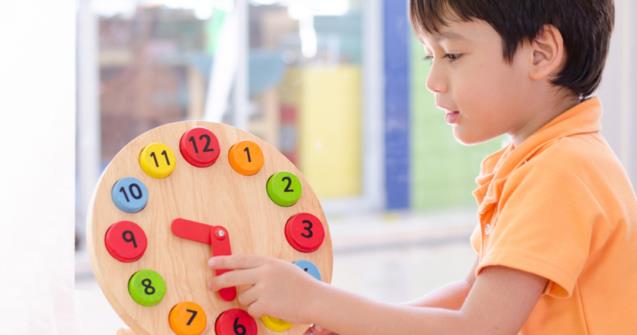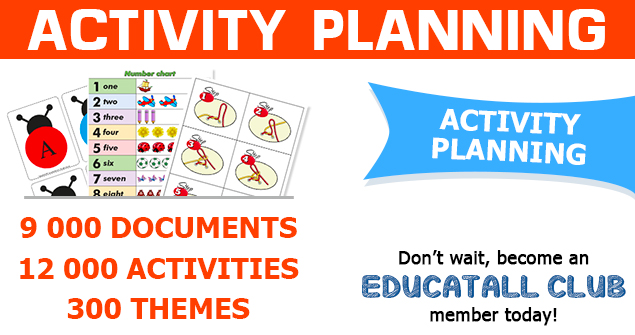
The concept of time, an interesting challenge for little ones
Understanding the concept of time is challenging for all children. During early childhood, children have no concept of time whatsoever. However, they live in a world that is regulated by time through routines, obligations, lateness, appointments, and so much more. Children are constantly pitted against the concept of time, a concept they are unable to grasp. That may seem to be a grave assessment, but it is the grim reality. We are always telling children to hurry up, that we must be outside in two minutes... However, children have no idea what "two minutes" represents. Children only begin to gain some understanding of the concept of time when they reach kindergarten. That is when they will distinguish minutes, hours, and days. Before that, children will find time references in the sequence of events that make up their daily routine. That is why a daily routine is essential for children. It can provide a sense of security.
For certain children with special needs, mastering the concept of time can be extremely difficult if not impossible, depending on their conditions or challenges. This can be explained by the fact that everything surrounding time is quite abstract. Nonetheless, different means can be implemented to help children situate themselves in time. As early childhood educators, we can only benefit from introducing children to tools that will help them identify reference points. Otherwise, they may feel lost in their educational framework. This could result in an increased level of anxiety and disorganization. Here's how you can help.
Provide visual routines. Use pictograms to create a visual routine. You could also use pictures of the children in your group. Display your visual routine where children can easily see it and refer to it whenever necessary. A visual routine will help children understand the beginning and end of each activity as well as help them anticipate upcoming activities. With certain children, you could even use a mini format of your visual routine. Simply slide each pictogram on a binder ring. They will enjoy carrying their routine everywhere. They could, for example, hang it on their belt. This will make it possible for them to refer to their visual routine even when they are out and about.
Use a timer. Timers represent great tools for indicating the beginning and the end of an activity. An audible signal is easy for children to notice. Whenever they hear the beep, they will know it's time to change activities. Using a visual routine with a timer can represent a great combination.
The time-timer. A time-timer is a highly efficient tool. Children see the red part get smaller and smaller as time goes by. Simply enter the time required for each activity. When the arrow reaches "0", an audible sound will be activated to indicate the end of the activity.
Educatall has prepared a tool that works much like a time-timer. Follow the steps below for optimal use of this tool.
- (Open activity timer) Print.
- Cut out the arrow. Laminate the activity timer and the arrow.
- Punch a hole in the centre of the activity timer and insert the arrow loosely, so it can turn.
- Use a dry-erase marker to write the number of minutes on the lines (5-10-15, etc.), per your needs.
- Explain the meaning of each color to your group (green=X minutes left, yellow=activity change in X minutes, red=end of activity in X minutes).
- When you begin an activity, position the arrow in the green section. Gradually move the arrow as time goes by. Give children verbal cues. For example, you may tell them that the arrow is "now in the yellow section, so there are only 10 minutes left for their current activity."
- Once the arrow is back to the starting point, the activity is over.
Once again, this tool may not work right off the bat. When you first begin using it, you will have to give children frequent verbal reminders. With time, they will better understand the idea and the activity timer will be helpful.
Maude Dubé, Specialized educator

 Home
Home Theme activities
Theme activities
 Babies and toddlers
Babies and toddlers
 Arts and crafts
Arts and crafts
 Science
Science
 Creative recipes
Creative recipes
 Tips and tricks
Tips and tricks
 Special needs
Special needs
 Extra activities
Extra activities
 Educ-TV
Educ-TV
 Newsletter
Newsletter  Online store
Online store Educatall club
Educatall club

